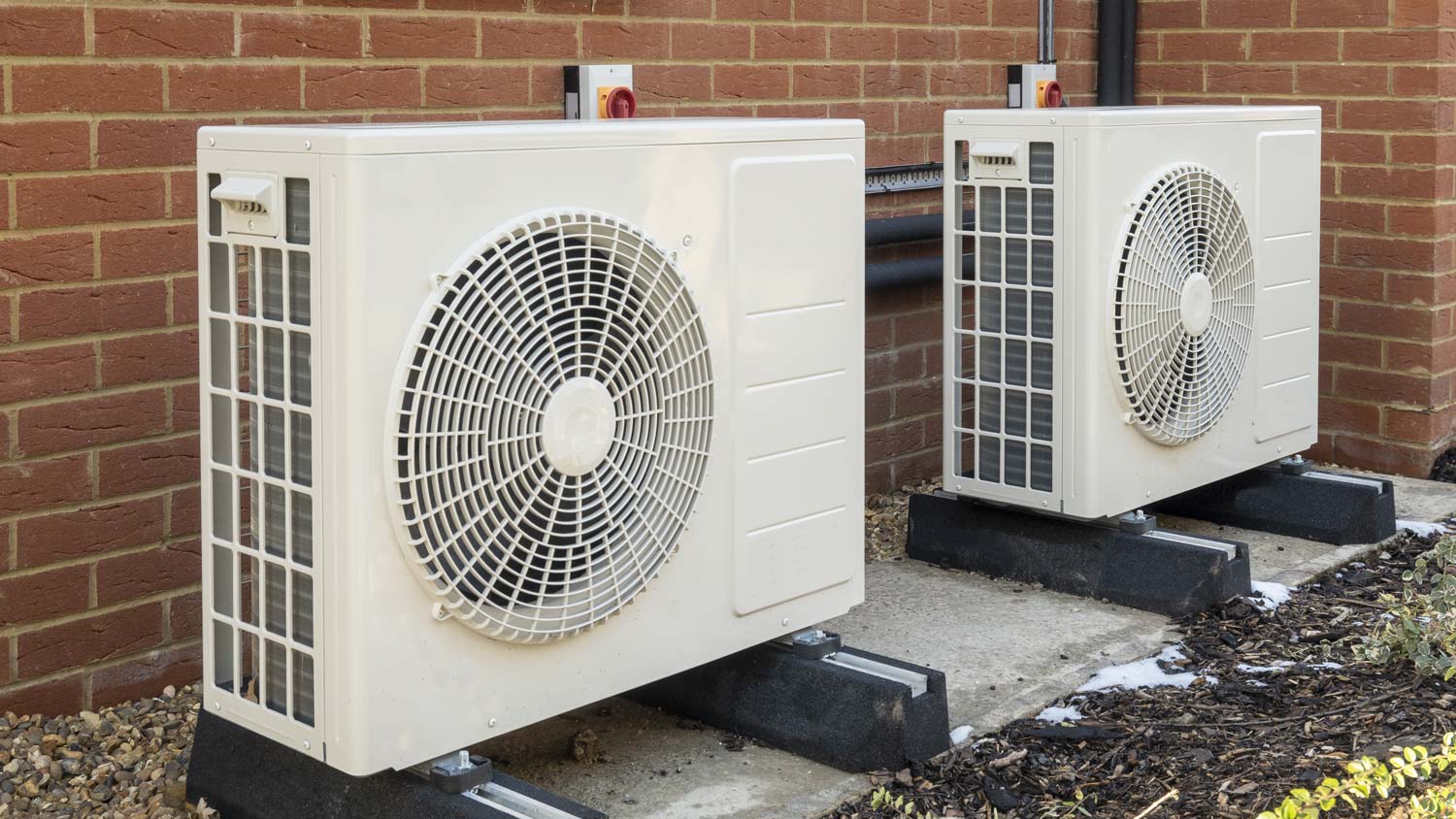
A worn AC fan motor can cause your system to overheat. Budget for AC unit fan motor costs, including parts and labor, with this guide.
If your home seldom goes below freezing, a heat pump is your new best friend


Heat pumps pump outside air into your home to heat it.
They work best in above-freezing temperatures.
Heat pumps are designed to run continuously.
A good starting temperature to set is 68 degrees Fahrenheit.
With an air-source heat pump system, you’re on your way to a more energy-efficient way of heating your home that will be kind to your wallet to boot. But heat pumps work a little bit differently than traditional thermostats.
Follow these useful tips to find a heat pump temperature setting that’s right for your family and ensure your system is working as well as it can.
Before you skip right to settings, it’s important to understand what makes your new heat pump system so different from other methods of warming the house you may have used in the past.
Traditional furnaces powered by gas work by generating heat which is pushed into your home through ducts courtesy of the furnace’s blower. Your heat pump has ducts, too, but it doesn’t periodically blast air through the ducts. Instead, the pump is constantly moving air.
Heat pumps take heat from outside and direct it into the home. The catch? They can only do this when the outdoor temperature is above freezing. Heat pumps go for their backup element, which uses a lot of electricity when the temperature goes below freezing.
According to the Department of Energy, you should try to keep your system at 68 degrees Fahrenheit, but the best temperature setting for you is only something you can gauge. The temperature you choose should keep you comfortable and allow your system to run efficiently when the home is occupied and family members are awake. Use the Department of Energy’s suggestion as a starting point, and you can adjust from there using the tips below.
Gas furnaces intermittently blast air through ductwork to warm homes. But, because they aren’t constantly running hot air into your home, the hot air they release is usually warmer than the air generated by a heat pump.
Furnaces traditionally blast air at 120 degrees, while a heat pump will emit air between 90 and 100 degrees. Keep in mind that when you’re setting temps with a heat pump, a little goes a long way because the air is constantly being directed into the home. You should aim for the heat pump temperature setting that indicates how you actually want to feel.

Another way that heat pumps differ from gas-powered furnaces is that heat pumps are more efficient when they are running all the time. By that token, no matter what setting you put your heat pump on, you can expect it to run significantly longer than a furnace’s cycle setting would.
Like selecting your new perfect temperature, you’ll have to go through some trial and error to find which setting works best for you and your home.
Homeowners with blast-air furnaces may spend a lot of time finding ways to save money with their systems. This process often means keeping thermostats off when sleeping and as low as possible throughout the day. However, this method isn’t effective with heat pump systems.
It takes these systems longer to heat the home than a gas furnace-powered system would, which means they naturally need to be on longer. Additionally, setting the temperature too low could mean kicking your heat pump’s backup element into gear, which will wind up using more power, not less. Again, aim for the temperature you actually want the home to feel like and then adjust from there.
Becca Stokes contributed to this article.
From average costs to expert advice, get all the answers you need to get your job done.

A worn AC fan motor can cause your system to overheat. Budget for AC unit fan motor costs, including parts and labor, with this guide.

When your window AC isn’t cutting it, but central AC is too expensive, installing a new ductless mini-split AC may be the cooling solution you’re looking for. Find out what a mini-split costs and how to hire the right pros to get the job done.

Faulty AC drip pans can lead to pesky leaks and improper home cooling. Find out how much AC drip pan replacement costs for your cooling system.

Learn how to add Freon to your AC unit with our step-by-step guide, and keep your home cool with a properly functioning AC unit.

Baseboard heater covers can endure a lot of wear and tear, but eventually you’ll want to replace them. Here’s the best way to switch out baseboard heater covers.

Energy bills rising? Here’s how to perform a DIY duct leakage test to locate any damage in your ductwork and restore your energy-efficient home.